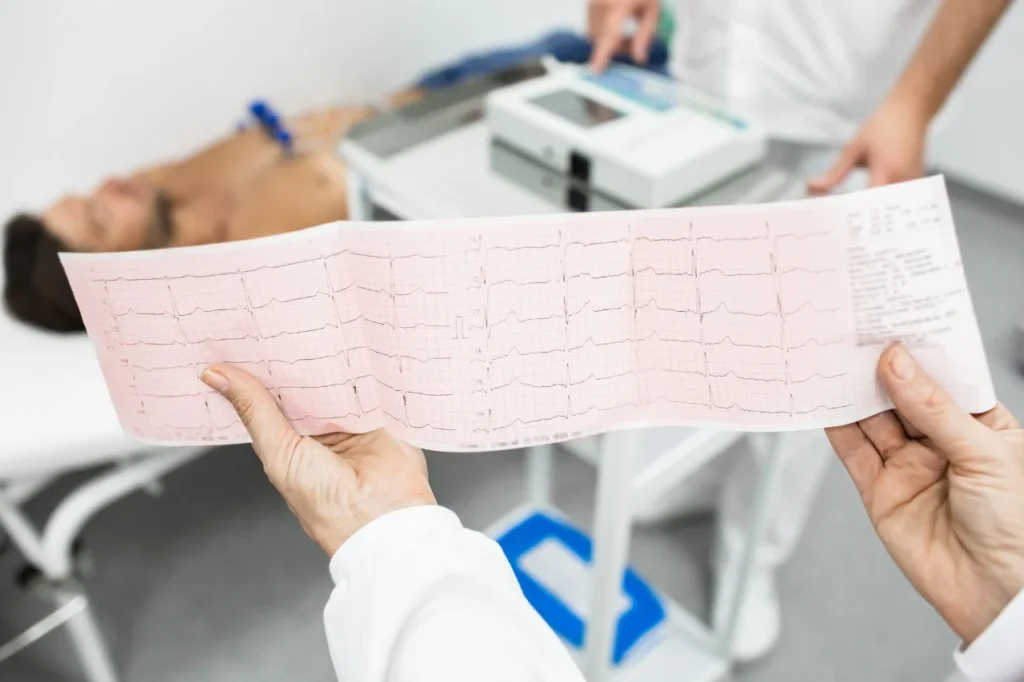Blog

POTS Tilt Table Test: What to Expect & How It Helps Diagnosis
If you or a loved one are being evaluated for Postural Orthostatic Tachycardia Syndrome (POTS), your provider may recommend a tilt table test to help confirm the diagnosis. This test plays a crucial role in understanding how your body responds to changes in position — and it’s often key in identifying autonomic disorders like POTS.
In this blog, we’ll walk you through what a POTS tilt table test is, what you can expect during the procedure, and how it helps healthcare providers reach an accurate diagnosis.
What Is a Tilt Table Test for POTS?
A tilt table test is a diagnostic procedure designed to evaluate how your heart rate and blood pressure respond when you go from lying down to standing up — a change that typically triggers symptoms in individuals with POTS.
Why it matters:
People with POTS often experience an excessive increase in heart rate (30+ bpm) within 10 minutes of standing, without a significant drop in blood pressure. The tilt table test recreates this response in a controlled environment.
How the Test Works: What to Expect
While it may sound intimidating at first, the tilt table test is safe and relatively simple. Here’s how it usually goes:
1. Preparation
- You’ll be asked to lie flat on a special motorized table.
- Your heart rate and blood pressure will be monitored throughout the test.
- You may be asked to fast for a few hours beforehand (your provider will give you instructions).
2. Tilt Phase
- The table is gradually tilted to a nearly upright position (about 60–80 degrees).
- You remain secured to the table with safety straps to prevent falling.
- You’ll stay in this position for about 10–45 minutes, depending on the protocol.
3. Monitoring Symptoms
- Medical staff will watch for increased heart rate, dizziness, nausea, or fainting — symptoms commonly associated with POTS.
- Some tests may involve administering medications (like nitroglycerin) to provoke a response if needed.
4. After the Test
- You’ll return to a flat position to rest and recover.
- Most people are fine to resume normal activities shortly after.
How the POTS Tilt Table Test Helps with Diagnosis
The tilt table test provides measurable, objective data that supports a POTS diagnosis. It helps physicians differentiate between:
- POTS – excessive heart rate increase without significant blood pressure drop
- Orthostatic Hypotension – significant blood pressure drop
- Vasovagal syncope – sudden drop in heart rate and blood pressure leading to fainting
A positive test result for POTS typically shows:
- An increase in heart rate of ≥30 beats per minute (or ≥40 bpm in adolescents) within 10 minutes of being upright
- Symptoms such as lightheadedness, nausea, or heart palpitations
Concerned About POTS? We’re Here to Help
If you’re struggling with unexplained dizziness, rapid heart rate, or fatigue when standing, it’s time to get answers. At Bloomfield Vein & Vascular, PLLC, we offer expert evaluation and care for POTS and related autonomic disorders.Call us today or schedule an appointment online to take the next step toward diagnosis and relief. The path to feeling better starts with understanding what’s really going on inside your body.

